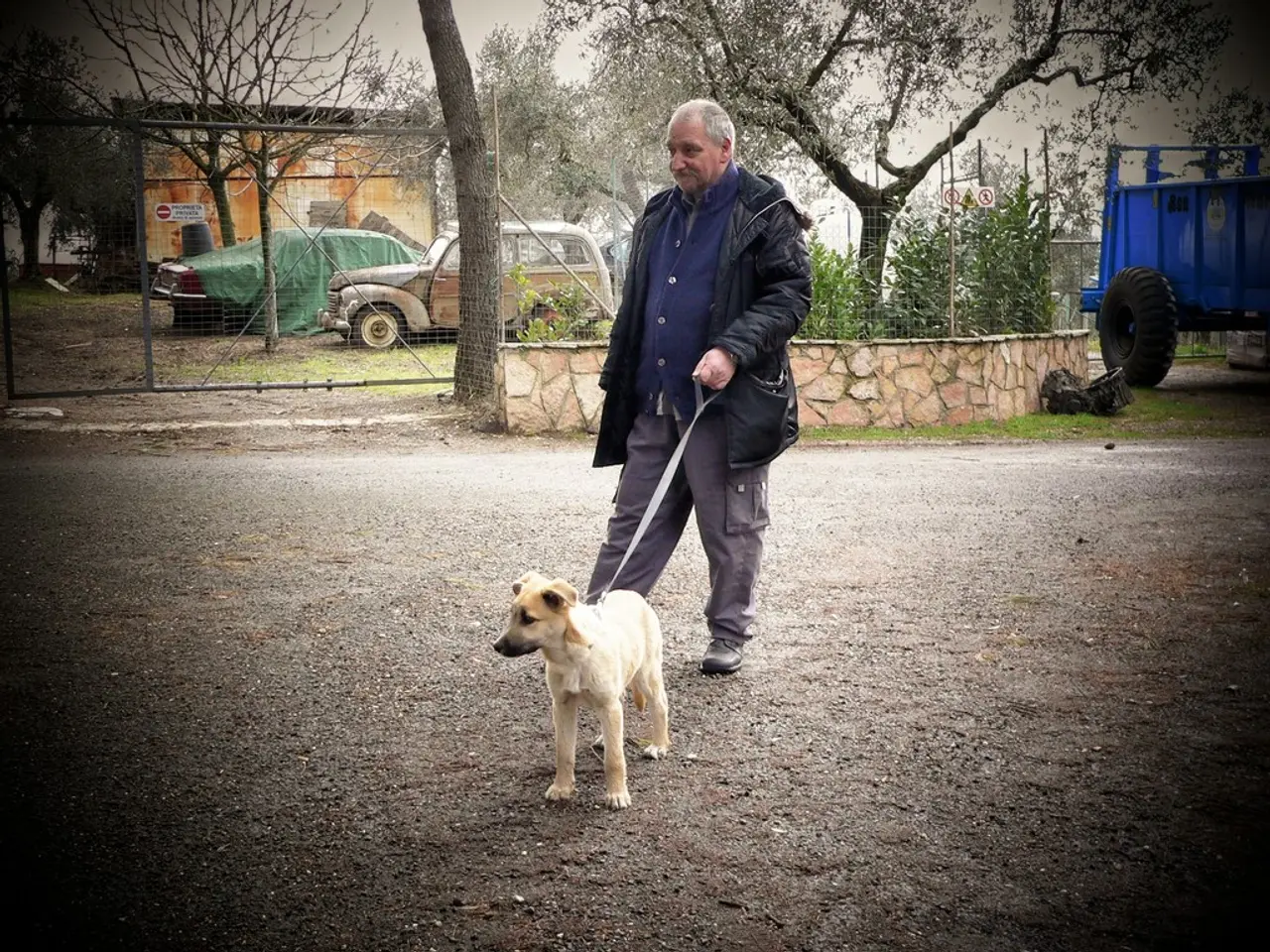Utilizing a Canine Harness: Expert Advice from a Veterinary Professional
When it comes to using a dog harness, patience is key. Here's a step-by-step guide to help you figure out the right harness size, introduce it to your dog, and gradually acclimate them to wearing it.
Measuring for the Right Harness Size
Start by measuring your dog's neck circumference and girth (around the widest part of the chest, typically just behind the front legs). Use these measurements to select a harness size, ensuring it is snug but not tight—you should be able to fit two fingers between the harness and your dog’s body for comfort.
Choosing an Adjustable Harness
Opt for a harness with multiple adjustment points for a perfect fit. For example, the PetSafe 3-in-1 Dog Harness offers 5 points of adjustment, allowing it to be tailored as your dog grows or if body shape changes.
Introducing the Harness Gradually
Let your dog sniff and explore the harness without putting it on initially to build positive associations. Use treats and praise to create a positive experience.
Putting on the Harness the First Time
When your dog is calm, gently slip the harness on. For harnesses with buckles that go around the neck and torso, it may help to unbuckle and place over the head first, then fasten around the chest. Some harnesses have a colored or marked top strap to help orient it correctly.
Getting Your Dog Used to the Harness
Allow your dog to wear the harness indoors for short periods, gradually increasing duration. Provide treats and affection to reinforce calm behavior while wearing it.
Practicing Walking with the Harness
Start leash training indoors or in a secure space to let your dog get used to walking with the harness. Keep sessions short and positive. Once comfortable, move to outdoor walks.
Checking for Proper Fit Regularly
Recheck the fit regularly and adjust as necessary, especially for puppies who may grow quickly. The harness should remain snug but allow freedom of movement without chafing or slipping.
Different Types of Dog Harnesses
There are different types of dog harnesses, such as front-clip vs back-clip harnesses. For instance, a Ruffwear Front Range Dog Harness offers two connection points to allow for walking or training your dog with a double-ended lead. Its Y-shaped style won't limit your dog's movement and the thick padding ensures comfort on walks.
A Step-in Dog Harness
A step-in dog harness requires laying the harness flat on the ground and placing the dog's front feet into the two triangles. This type of harness can be particularly helpful for dogs that have learned how to wriggle out of their traditional harnesses.
Going Slow with Puppies
A harness and leash may be overwhelming for a puppy, so it's important to take it slow. Inside practice can help get a dog or puppy used to their harness with short walks and praise. Once a dog is comfortable wearing their harness at home, they can start going for short walks outside, gradually building up the length of time.
Wearing a Harness Only During Walks
Harnesses should only be worn when going out on walks, not all the time. They tend to be big and bulky, becoming uncomfortable when worn for extended periods or when a dog is trying to lie down and rest.
Alleviating Neck Pain
A good harness can help alleviate neck pain by spreading pressure across a dog's chest and back. Allow a dog to wear the harness for short periods indoors, praising them and playing with them to build a positive association.
Investing in the Best Dog Harness
Investing in the best dog harness can provide more control over a pup during walks. However, collars can be worn all the time, which can be useful if you need to hold on to them when the doorbell goes suddenly or to stop them jumping up at visitors.
[1] PetSafe 3-in-1 Dog Harness: https://www.petsafe.net/dog-harnesses/3-in-1-harness [2] Julius-K9 IDC Harness: https://www.julius-k9.com/products/idc-harness [3] Ruffwear Front Range Dog Harness: https://ruffwear.com/products/front-range-dog-harness
- To ensure the harness is not too tight or too loose, measure your pet's neck circumference and chest girth before selecting a size.
- If your pet is growing or experiencing body shape changes, opt for an adjustable harness like the PetSafe 3-in-1 Dog Harness.
- Initially, let your dog sniff and explore the harness to create positive associations and use treats as reinforcement.
- When putting on the harness for the first time, slip it on gently and make sure to fasten it correctly, using a marked or colored top strap as a guide.
- Gradually acclimate your pet to wearing the harness by allowing them to wear it indoors for short periods, providing treats and affection for calm behavior.
- Once your pet is comfortable, practice leash training indoors or in a secure space, keeping sessions short and rewarding.
- Proper fit is crucial for comfort and safety, so recheck the harness regularly and adjust as needed, especially for puppies growing quickly.




